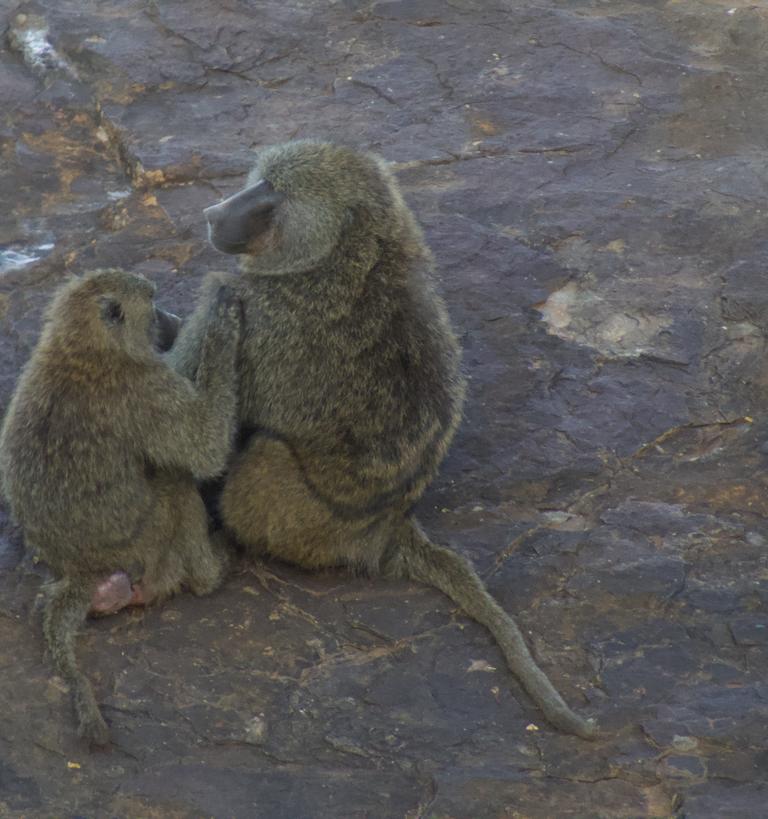Baboon Research Program

Baboon Research Program
Institutions:
Max Planck Institute of Animal Behavior
Principal Investigators:
Meg Crofoot, mcrofoot@ab.mpg.de; Roi Harel, rharel@ab.mpg.de; Chase Nunez ( Post Doc), cnunez@ab.mpg.de
The project aims to understand how social processes structure sleep patterns in individuals, groups, and populations and test how gregarious animals navigate the opportunities and constraints imposed by sleeping as part of a group.
To understand how group-living animals make complex, socially contingent decisions, we use thermal tracking and accelerometry—animals FitBits, if you will—to investigate how wild olive baboons incorporate environmental and social factors into their choices about where to sleep and how these decisions impact the quality of their sleep.
Baboons are most vulnerable to predators—particularly leopards—at night. To reduce this risk, troops sleep in trees or on cliffs, selecting perches that are difficult for predators to access. While predation risk may heavily influence individuals’ choices about where to sleep, it is far from their only consideration. By studying how baboons choose where to sleep, we aim to understand how animals navigate complex and multi-dimensional decisions that both influence and are influenced by the decisions of their group mates.
Although all animals sleep, we understand remarkably little about it. Most research on sleep is conducted in sleep laboratories, disconnected from its natural context. This project gives us the exciting opportunity to study sleep in a real setting. It gives insight into collective sleep behavior and how this shapes complex social systems.
